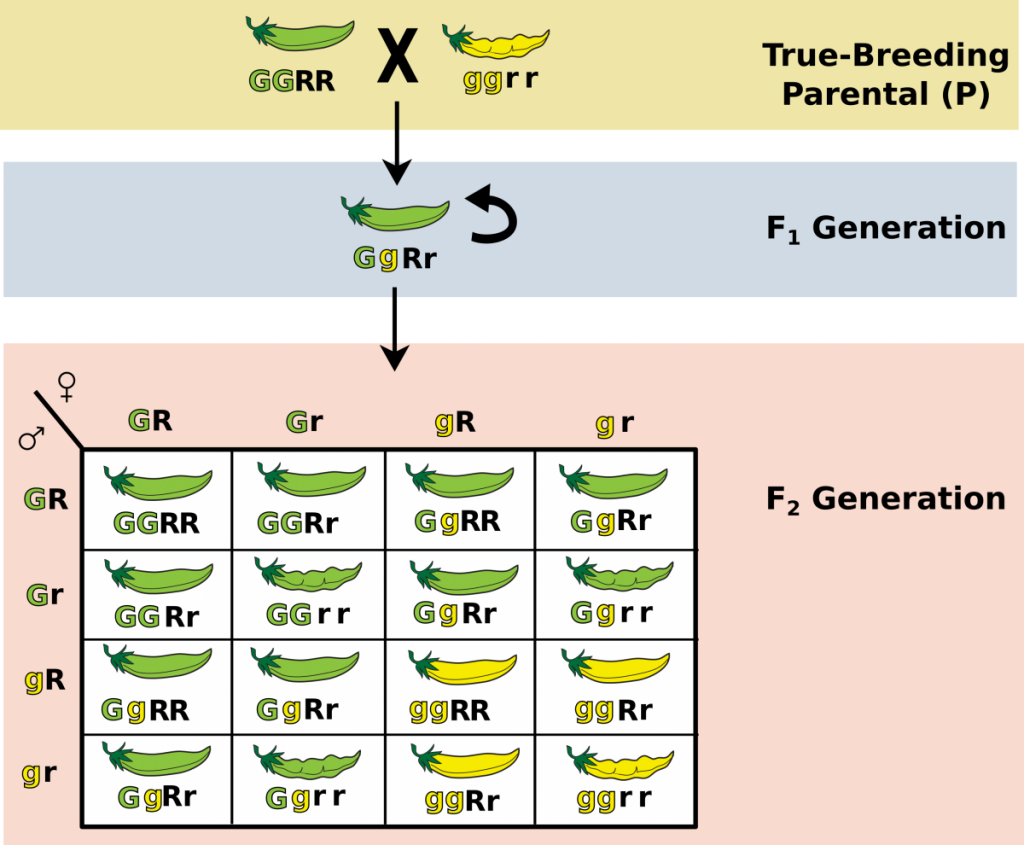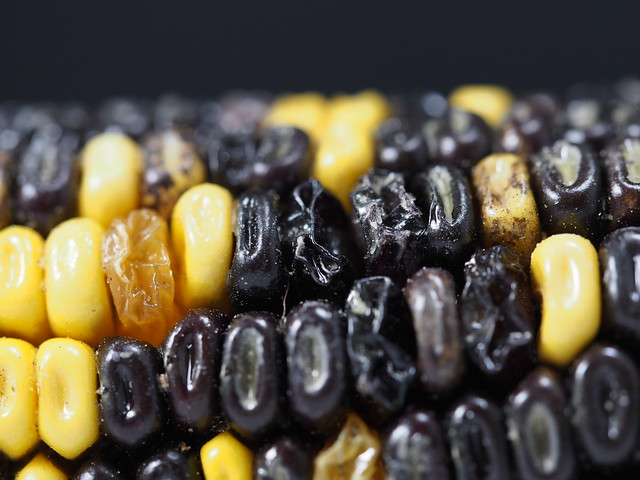Contents
The Two Trait Cross (Dihybrid Cross)
Mendel continued his experimentation where he looked at two traits. These two trait crosses are called dihybrid crosses. While the monohybrid cross would yield 3:1 ratios of the phenotypes, the dihybrid crosses would yield 9:3:3:1 ratios of all the combinations of each phenotype.
Mendel’s Rule of Independent Assortment
The dihybrid cross revealed another law of inheritance to Mendel. By observing the 9:3:3:1 ratio, Mendel concluded that traits were not tied to each other. That is to say, if a pea pod was yellow, it could still be either smooth or wrinkled in texture. This lack of linkage between genes yielding different characteristics was dubbed the Law of Independent Assortment. Genes for different traits can segregate independently during the formation of gametes.
Kernel Coloration and Texture in an F2 Population (activity)
- Retrieve a dihybrid F2 corn cob
- Count a total of 200 kernels
- Tally the number of Yellow Kernels that are rounded and smooth in texture
- Tally the number of Yellow Kernels that are shriveled and wrinkly in texture (honey colored)
- Tally the number of Purple Kernels within that rounded and smooth in texture
- Tally the number of Purple Kernels within that are shriveled and wrinkly in texture
- Ignore any speckled kernels that may have yellow and purple within them
- Compare numbers with the class as a whole
- Each kernel constitutes an individual organism ( a seed that can give rise to a whole new plant). From the numbers:
- Is there a dominant texture (smooth or shriveled)?
- Which is dominant, if there is?
- Is there a color that always pairs with a texture or do these characteristics assort independently?
- Create a Punnet square to illustrate the expected number of each color/texture combination in a simple dominant:recessive paradigm.


